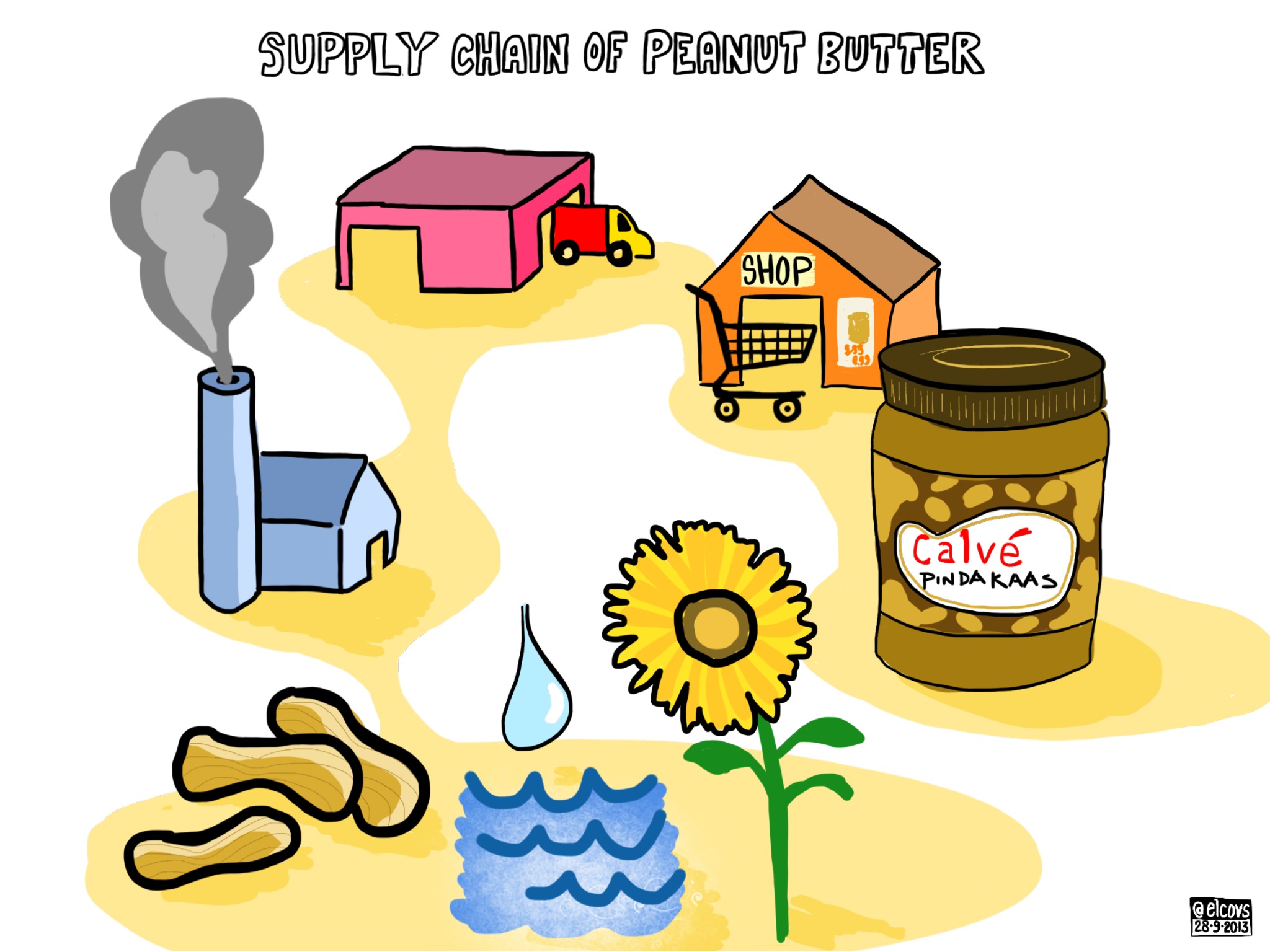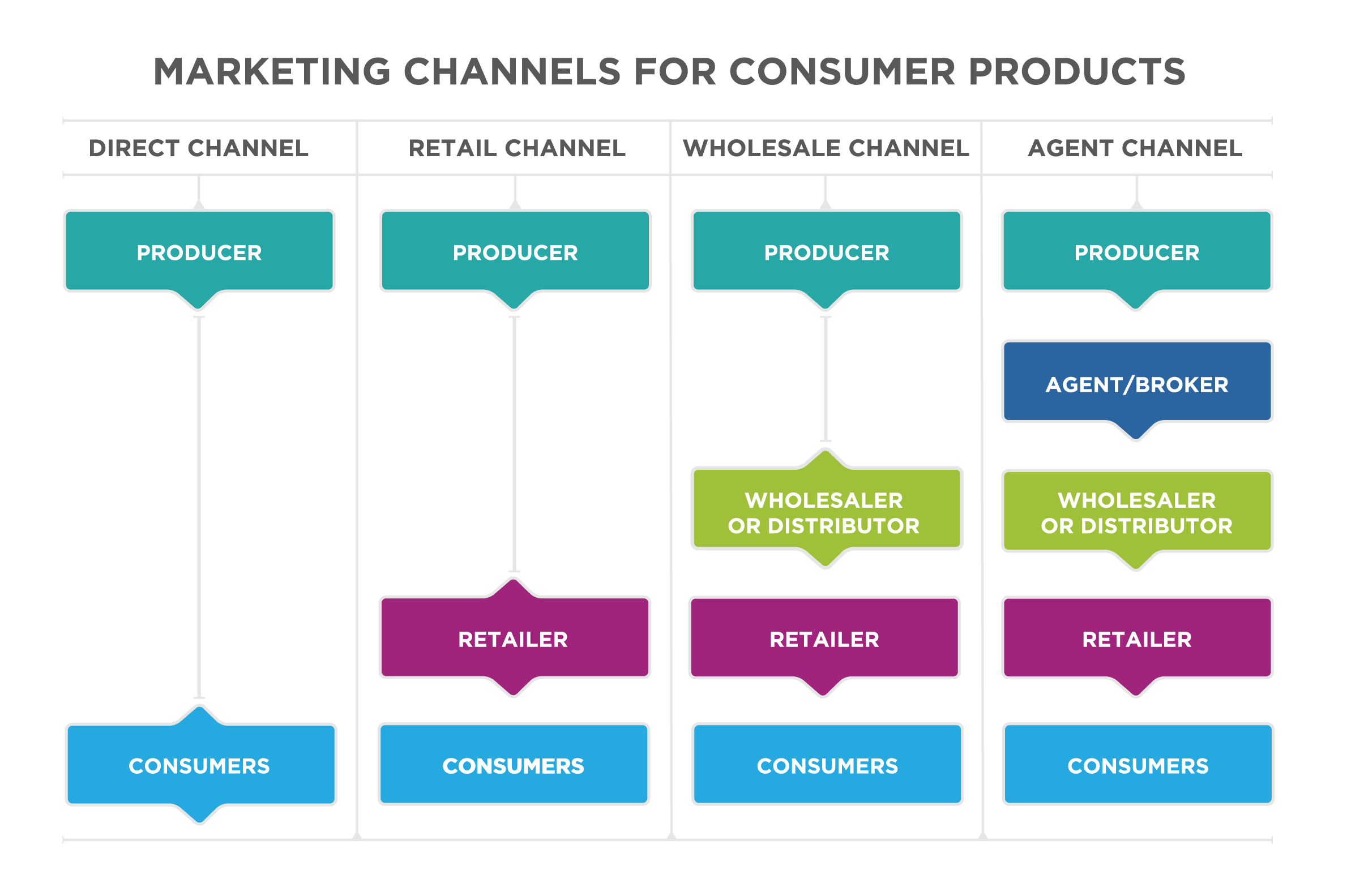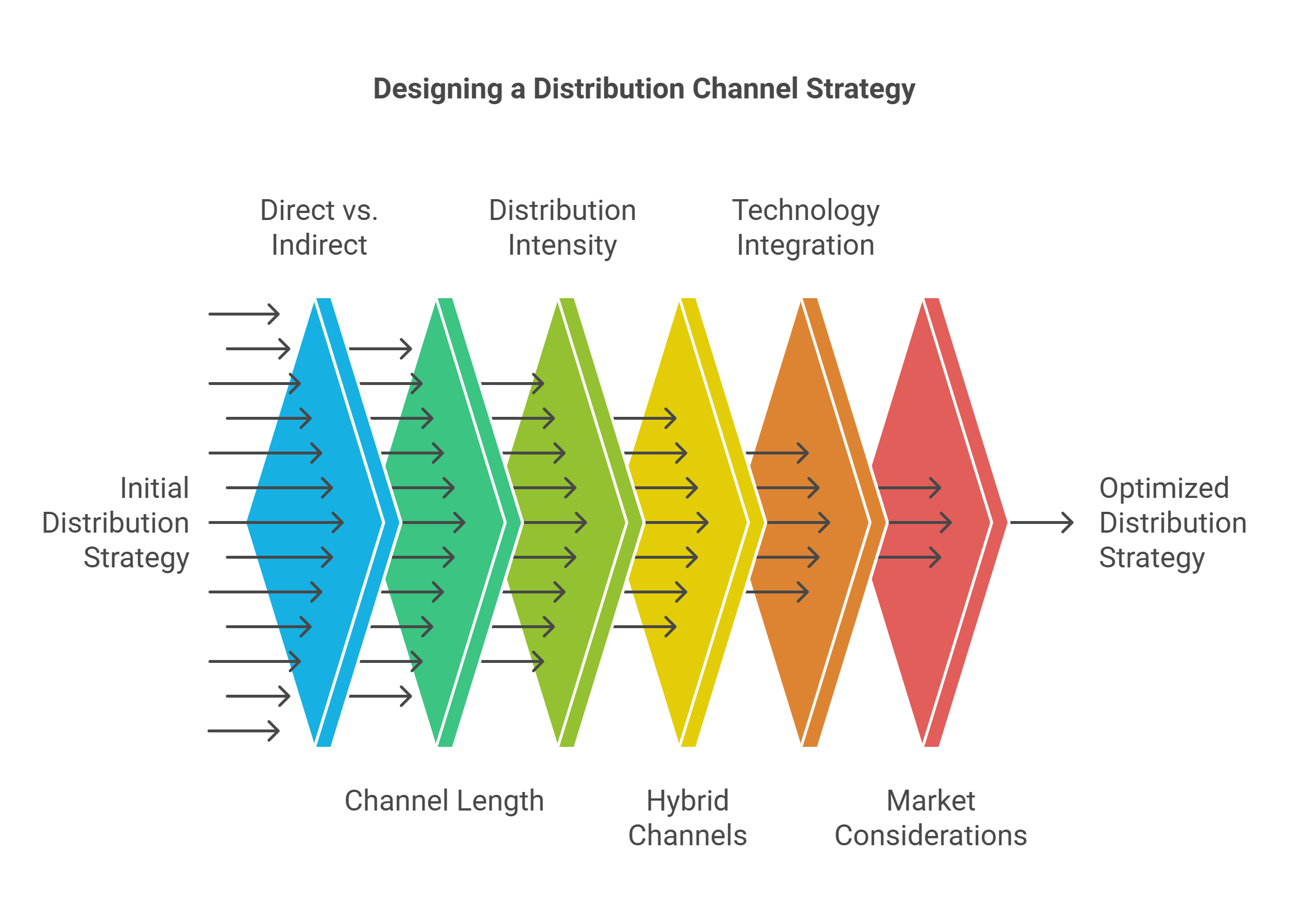Navigating Channels: Distribution and Place
Supply Chains and Distribution Channels
Supply chains and distribution channels are central to how products and services move from producers to consumers[1]. Although these concepts are closely linked, they play distinct roles. The supply chain focuses on the entire lifecycle of a product or service, while distribution channels concentrate on delivering the final offering to the customer.

The Supply Chain: A Comprehensive System
A supply chain encompasses the entire process of creating and delivering a product or service, from raw materials to the end customer. It is a broader concept that includes all activities, resources, and information involved in production and delivery.
In the context of tourism, key components of a supply chain include:
- Suppliers (e.g., food, linens, and toiletries)
- Service providers (e.g., maintenance and cleaning)
- Technology infrastructure (e.g., booking systems)
- Human resources (e.g., staff recruitment and training).

“Module 1: What is Supply Chain Management? (ASU-WPC-SCM) – ASU’s W. P. Carey School” [8:04 min] by W. P. Carey School of Business[2]
If you are using a printed copy, you can scan the QR code with your digital device to go directly to the video: Module 1: What is Supply Chain Management? (ASU-WPC-SCM) – ASU’s W. P. Carey School

Distribution Channels: The Final Link
Distribution channels are a subset of the supply chain, focusing specifically on how products or services reach the end customer. They represent the pathways and intermediaries involved in making a particular product or service available to consumers. An intermediary is an individual or organization that acts as a link between producers or service providers and end consumers in the distribution channel, facilitating the movement of goods or services from the point of production to the point of consumption.
Key Intermediaries in Distribution Channels
There are three key intermediaries in distribution channels:
- Retailers
- Wholesalers/distributors
- Agents/brokers.
Retailers
Retailers sell products or services directly to end consumers. Examples include:
- Traditional Brick-And-Mortar Stores: Department stores (e.g., Walmart and Costco) and specialty shops (e.g., Best Buy for electronics and REI for outdoor gear).
- E-commerce Platforms: Amazon, Shopify, and eBay.
- Online Travel Agencies (OTAs): Expedia and Booking.com.
- Service Providers: Restaurants and cafes, hotels and accommodations, and local tour operators selling excursions directly to tourists.
- Financial Retailers: Retail banks offering services to individual consumers and insurance companies selling policies directly to customers.
Wholesalers/Distributors
Wholesalers and distributors purchase in bulk from producers and sell to retailers or other businesses. Examples include:
- Merchant Wholesalers: Labatt Food Services (food industry), Cardinal Health (healthcare industry), and Ingram Content Group (book industry).
- Industry-Specific Distributors: Food and beverage distributors supplying restaurants and hotels, linen and uniform services for hospitality businesses, and technology distributors like Ingram Micro or Tech Data.
- Travel Wholesalers: Companies that buy blocks of hotel rooms, airline seats, or cruise cabins to resell.
- Financial Wholesalers: Investment banks that underwrite and distribute securities.
- Supply Chain Intermediaries: Freight forwarders organizing shipments for companies and trading houses connecting companies for import/export services.
Agents/Brokers
Agents and brokers facilitate transactions without taking ownership of products or services. Examples include:
- Travel Industry: Travel agents booking arrangements for clients and corporate travel management companies.
- Real Estate: Real estate agents facilitating property transactions and commercial real estate brokers.
- Financial Services: Insurance brokers, stockbrokers, and mortgage brokers.
- Entertainment and Sports: Talent agents representing actors, artists, and athletes, and literary agents for authors.
- Business Services: Advertising agencies creating and managing marketing campaigns, and employment agencies connecting job seekers with employers.
- Specialized Brokers: Commodity brokers, business brokers facilitating the buying and selling of businesses, and hotel brokers assisting in the purchase and sale of hotel properties.
Types of Distribution Channels
Distribution channels for consumer products (B2C) generally fall into three categories:
- Direct Channels: Producers sell directly to consumers, such as through their own websites or company-owned outlets.
- Indirect Channels: One or more intermediaries facilitate the transfer from producer to consumer. Indirect channels can be:
- One-Level: Producer → Retailer → Consumer
- Two-Level: Producer → Wholesaler/Distributor → Retailer → Consumer
- Three-Level: Producer → Agent/Broker → Wholesaler → Retailer → Consumer
- Hybrid Channels: A combination of direct and indirect approaches to broaden market reach and flexibility.

Factors Influencing Channel Selection
When choosing how to distribute products and services, organizations consider:
- Product Characteristics: Perishability, complexity, and customization needs.
- Target Market & Buying Habits: Consumer preferences and purchase behaviour.
- Company Resources & Capabilities: Operational strengths and limitations.
- Competitive Landscape: The distribution strategies of industry rivals.
- Cost Considerations: Commissions, fees, and maintenance expenses of certain channels.
Distribution Strategies
Businesses can employ different distribution strategies based on their goals and market conditions:
- Intensive Distribution: This involves placing products in as many outlets as possible.
- Example: A budget hotel chain might list its rooms on numerous online platforms to maximize visibility.
- Selective Distribution: This strategy involves choosing specific intermediaries to sell products.
- Example: A luxury eco-lodge might work only with specialized travel agencies that cater to environmentally conscious travelers.
- Exclusive Distribution: This limits product sales to select outlets.
- Example: An ultra-luxury resort might only allow bookings through a single high-end travel concierge service.
Effective channel management involves selecting partners, motivating them, evaluating performance, managing conflicts, and adapting to emerging trends, such as omnichannel approaches, direct-to-consumer models, and digital distribution.
The Role of Intermediaries: Pros and Cons
Intermediaries offer various functions that can benefit both businesses and customers. However, their use also comes with potential drawbacks.
Advantages of Intermediaries:
- Market Access: Reach new and remote markets.
- Expertise: Specialized knowledge of local consumer preferences and market conditions.
- Cost Efficiency: Leverage established networks rather than building one from scratch.
- Risk Sharing: Distributors can help absorb some market risks.
- Value-Added Services: Intermediaries may provide customer support, marketing, or after-sales services.
Disadvantages of Intermediaries:
- Loss of Control: Limited influence over how your product is sold and presented.
- Reduced Profit Margins: Intermediary fees can erode profits.
- Potential Conflicts: Different goals or pricing strategies can create channel friction.
- Dependency: Over-reliance on certain intermediaries can make a business vulnerable.
- Communication Challenges: Information may become distorted as it passes through multiple parties.

Marketing Distribution Channel (PLACE)
In the context of a particular organization, the distribution channel (or “Place” in the marketing mix) refers to the specific distribution channel configuration(s) used by the organization to make their product(s) available and accessible to potential customers.

When designing their distribution channel strategy, organizations need to make several key decisions:
- Direct vs. Indirect Distribution:
- Direct Distribution: The organization sells directly to consumers without intermediaries, allowing for greater control over customer experience and branding. For example, companies like Tesla sell vehicles directly through their own showrooms and websites.
- Indirect Distribution: This involves intermediaries such as wholesalers, retailers, or agents who facilitate product delivery to consumers. For instance, Coca-Cola uses a network of distributors and retailers to ensure its products are widely available.
- Channel Length:
- Short Channels: These involve fewer intermediaries (e.g., manufacturer → retailer → consumer) and are common in industries like automotive sales.
- Long Channels: These include multiple intermediaries (e.g., manufacturer → wholesaler → retailer → consumer), often used for fast-moving consumer goods (FMCG) like packaged foods.
- Distribution Intensity:
- Intensive Distribution: Products are made available at as many locations as possible to maximize reach. This approach is typical for FMCG brands like Nestlé or Coca-Cola.
- Selective Distribution: The organization limits distribution to select outlets that align with its brand and target market, as seen with premium electronics brands like Apple.
- Exclusive Distribution: Products are distributed through a single or very limited number of outlets in a specific region, often used for luxury goods or high-end fashion brands.
- Hybrid Channels: Many companies adopt a hybrid approach by combining direct and indirect channels to enhance flexibility and market reach. For example, a company might sell directly via e-commerce while also using retail partners for physical store presence.
- Technology Integration: Implementing tools like distribution management systems can improve efficiency by providing real-time insights into inventory levels, shipments, and performance. Companies like Vodafone and Nestlé have successfully used such systems to optimize their supply chains.
- Market Considerations: Organizations must evaluate factors such as geographic coverage, customer preferences, infrastructure availability, and regulatory requirements when designing their channels.
By carefully considering these aspects, organizations can create a distribution strategy that effectively reaches their target market, maximizes revenue, and aligns with their overall business objectives.
Media Attributions
- Figure 1: “Supply Chain” by EpicTop10.com (2019), via Flickr, is used under a CC BY 2.0 license.
- Figure 2: “Supply chain of peanut butter” by Elco van Staveren (2013), via Flickr, is used under a CC BY-SA 2.0 license.
- Figure 3: “Marketing channels for consumer products” by Lumen Learning, via Principles of Marketing, is used under a CC BY 4.0 license.
- Figure 4: “Pros and cons of using intermediaries” [created using Napkin.ai] by the author is under a CC BY-NC-SA 4.0 license.
- Figure 5: “Designing a distribution channel strategy” [created using Napkin.ai] by the author is under a CC BY-NC-SA 4.0 license.
- Chopra, S., & Meindl, P. (2021). Supply chain management: Strategy, planning, and operation (8th ed.). Pearson Education. ↵
- W. P. Carey School of Business. (2010, April 6). Module 1: What is supply chain management? (ASU-WPC-SCM) - ASU’s W. P. Carey school [Video]. YouTube. https://youtu.be/Mi1QBxVjZAw?si=ztTZ9faDl57UzPbt ↵
The network of all individuals, organizations, resources, activities, and technology involved in creating and selling a product, from the supplier to the end customer.
The path through which products or services move from the producer to the end consumer.
An individual or organization that acts as a link between producers and consumers in the distribution channel, facilitating the movement of goods or services.
A business that sells products or services directly to end consumers.
A business that buys products in bulk from manufacturers and sells them to retailers or other businesses.
Agents and brokers facilitate transactions without taking ownership of products or services.
A distribution channel where a producer sells directly to the end consumer without any intermediaries.
A distribution channel that includes one or more intermediaries between the producer and the end consumer.
A distribution approach that combines both direct and indirect channels to reach consumers.
The overall plan for how a company will make its products or services available to customers.
The number of intermediary levels in a distribution channel between the producer and the end consumer.
The extent to which a product is made available in the market, ranging from intensive (widely available) to selective or exclusive (limited availability).

